So you want to know how to write a coming of age story?
Coming of age is one of the central themes in all of literature, but it's also a specific type of story in its own right, one of the nine types of stories that we talk about in The Write Structure plot framework.
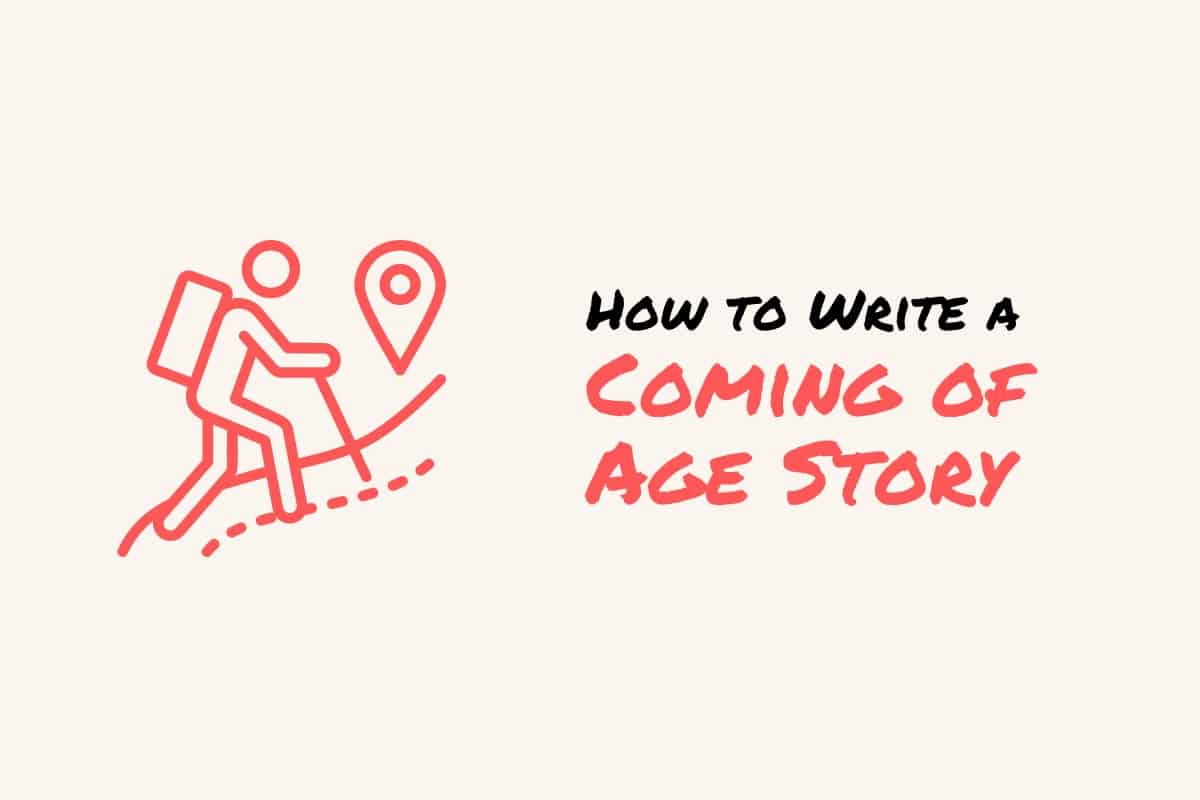
From cult and literary classics like To Kill a Mockingbird and The Perks of Being a Wallflower to some of the most popular novels and films of all time, including Harry Potter and the Sorcerer's Stone and even the film Batman Begins, are all, at their heart, coming of age stories.
Even more than that, it's also one of the few ways we describe all change in a character, one of the two internal plot types!
Which means if a character is growing and maturing in your story, no matter what age they are, you might be telling a coming of age story.
What Are Coming of Age Stories and Why Do They Matter?
Some definitions of coming of age argue that it's a genre of literature that follows a protagonist from youth to adulthood, but the truth is that coming of age journeys are about more than just a period of time.
I prefer the following definition:
A coming of age story is one of the nine types of plot and follows the character's internal maturation or degradation of worldview, identity, and self-actualization.
OK, but what does that mean?
The idea is that great stories are about values—the things we most care about as humans—and for coming of age stories, the value that we're talking about is self-actualization.
What is self-actualization?
Self-actualization is the process of discovering and fulfilling a character's full potential.
Which means that coming of age stories are about personal growth, moral growth, worldview, identity, and personal experience.
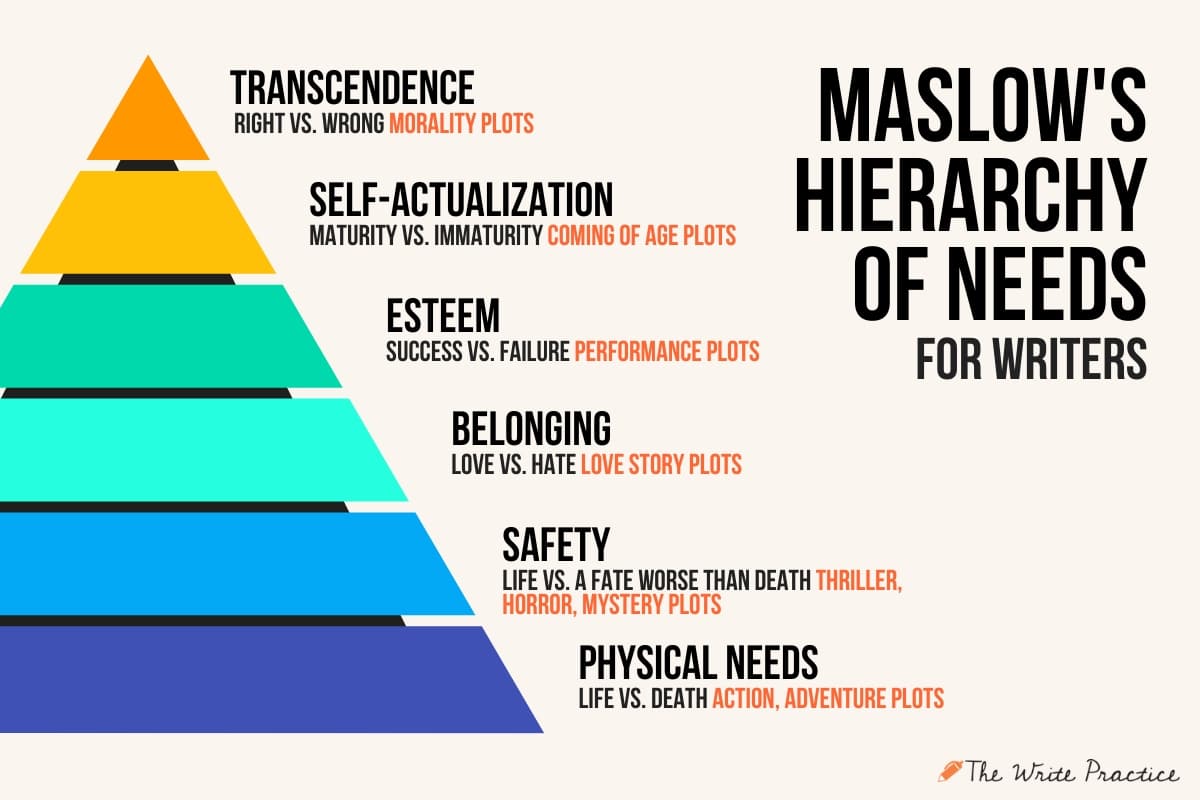
Stories of this type often involve a character discovering new aspects of their identity, going on a process of personal growth, gaining advice from trusted mentors, and reaching, by the end of the story, a sense of fulfillment, self-confidence, and contentment.
But not all coming of age stories have a happy ending. For tragic coming of age stories, instead of discovering their identity it might involve delusion. Instead of personal growth, personal degradation. Instead of living more in line with their values and goals, it would be about betrayal of self and others. And instead of experiencing satisfaction and contentment, it would end with resounding discontent and regret.
This means that coming of age stories can be about anyone of any age. Sometimes writers think coming of age stories are just about young people moving from an innocent worldview to a level of maturity, but they can be about anyone entering new phases of life or discovering new aspects of their identity.
Because of this focus on personal growth, identity, and maturity, coming of age stories are immensely popular, both to read and to write! Some of the greatest books of all time have been coming of age stories, and some of our favorite writers focus on them in their storytelling.
With that in mind, let's take a look at a few examples of coming of age stories before we break down the elements you'll find in them.
29 Examples of Coming of Age Stories
Coming of age stories are the most common type of internal plot, since most stories involve a character's internal transformation in some way.
Not all stories involve a character changing, and thus not all stories have internal plots. But of the ones that do, most of them are coming of age stories.
Below are examples of two types: coming of age main plots and coming of age internal plots.
That's because most novels and films have three plots, a main plot to carry the main action of the story, an internal plot to show the character's change throughout the story, and a subplot that supports the story and fills in the middle. (Depending on the form, some stories may have more plots or fewer. Check out the types of stories guide for more.)
Coming of age isn't just a story type, though, it's also a genre in and of itself, and some of the stories below could fit on the “coming of age” shelf at a bookstore or in your “coming of age” Netflix queue.
With that in mind, let's look at a few coming of age story examples.
12 Coming of Age Example Books as a Main Plot
For most stories, the main plot is external, focusing on adventure or action or mystery, as examples. However, some of our favorite stories are internal first and focus on coming of age as the main plot:
- Harry Potter and the Sorcerer's Stone by J.K. Rowling (1997) – Harry's introduction to the wizarding world and his first year at Hogwarts marks the beginning of his journey from an overlooked boy living under the stairs to a brave young wizard.
- Eat, Pray, Love by Elizabeth Gilbert (2006) – This memoir recounts Elizabeth Gilbert's journey of self-discovery after her divorce, wherein she finds balance in her life, discovers her capacity for joy and spiritual fulfillment, and learns to love again. (By the way, most memoirs have a coming of age main plot!)
- The Perks of Being a Wallflower by Stephen Chbosky (1999) – Charlie's journey from being a socially awkward teen to understanding himself and the world around him, all while dealing with his past trauma, highlights a deeply emotional coming of age story.
- To Kill a Mockingbird by Harper Lee (1960) – Young Scout Finch's exposure to racism and injustice in her hometown pushes her to grow and question societal norms, reflecting the theme of coming of age in a world marred by racial prejudice.
- War and Peace by Leo Tolstoy (1869) – Though not a traditional coming of age story, the characters in this novel navigate the complexities of life, love, and war, leading to personal growth and understanding of their place in society.
- The Kite Runner by Khaled Hosseini (2003) – The protagonist, Amir, deals with themes of guilt, friendship, and redemption, and his journey from a guilt-ridden boy to a man seeking to right his past wrongs is a powerful coming of age narrative.
- Educated by Tara Westover (2018) – In this memoir, Tara Westover narrates her journey from growing up in a strict, abusive family in rural Idaho to pursuing an education, eventually earning a PhD from Cambridge University, reflecting her transformation from an isolated and uneducated girl to a confident and knowledgeable woman.
- The Great Gatsby by F. Scott Fitzgerald (1925) – Nick Carraway matures as he witnesses the excesses of the jazz age and the tragic story of Jay Gatsby, learning about the illusions of the American dream and the realities of life.
- Bridget Jones's Diary by Helen Fielding (1996) – Bridget Jones matures from a woman constantly critiquing herself and searching for love, to one who learns to value herself, highlighting a unique, adult coming of age narrative.
- Life of Pi by Yann Martel (2001) – Pi Patel's extraordinary journey of survival and faith marks his transition from a curious boy to a man who has faced and overcome incredible odds.
- Wild: From Lost to Found on the Pacific Crest Trail by Cheryl Strayed (2012) – Cheryl Strayed's memoir documents her solo hike on the Pacific Crest Trail following personal tragedies, which prompts her journey from despair and loss to self-discovery and healing, marking a deeply personal coming of age narrative.
- The Glass Castle by Jeannette Walls (2005) – Walls' memoir recounts her childhood in a dysfunctional family, progressing from a naive child to a self-reliant adult, who learns to understand and accept her parents' flaws.
17 Coming of Age Example Books as an Internal Plot
By far, the more common way to use coming of age is as an internal plot subordinate to a main, external plot. The following stories include adventure, action, and romance as external plot types:
- The Alchemist by Paulo Coelho (1988) – Santiago's journey to find his Personal Legend represents a classic coming of age narrative, as he grows and learns about himself, his desires, and his place in the world.
- The Lion, the Witch and the Wardrobe by C.S. Lewis (1950) – The Pevensie children mature and develop significantly throughout their adventures in Narnia, learning about bravery, self-sacrifice, and the importance of honesty.
- The Hobbit by J.R.R. Tolkien (1937) – Bilbo Baggins, initially a timid and unadventurous hobbit, comes of age as he encounters danger, makes critical decisions, and grows into a hero of considerable cunning and bravery.
- Harry Potter Series (Books 2-7) by J.K. Rowling (1998-2007) – Harry and his friends navigate their teen years while also contending with the dark forces of Voldemort, learning about friendship, love, loyalty, sacrifice, and the complex nature of good and evil.
- Ben-Hur: A Tale of the Christ by Lew Wallace (1880) – The protagonist, Judah Ben-Hur, navigates both the political world of Jerusalem and his personal spiritual journey, ultimately leading to his understanding and acceptance of Christian teachings.
- Anne of Green Gables by Lucy Maud Montgomery (1908) – Anne Shirley matures from a precocious and imaginative orphan into a thoughtful, responsible, and passionate young woman, learning to navigate her world with grace and optimism.
- Charlotte's Web by E.B. White (1952) – Wilbur's development from a naive, dependent piglet to a brave and loyal friend shows his growth and understanding of life's difficult truths.
- The Outsiders by S.E. Hinton (1967) – The novel explores Ponyboy's struggle with identity, class conflict, and loss, as he navigates the transition from childhood innocence to the harsh realities of adulthood.
- The Hunger Games by Suzanne Collins (2008) – Katniss Everdeen matures through her experiences in the brutal Hunger Games, learning about sacrifice, survival, the brutality of power, and the nuances of rebellion and conformity.
- James and the Giant Peach by Roald Dahl (1961) – James undergoes a transformation from a lonely and scared child to a brave and responsible leader, learning about friendship, courage, and self-belief during his journey.
- Pride and Prejudice by Jane Austen (1813) – The Bennet sisters, especially Elizabeth, navigate societal norms and expectations of the Regency era, maturing in their understanding of love, respect, and individuality.
- Shogun by James Clavell (1975) – The British sailor John Blackthorne grows and matures as he navigates a completely new culture in medieval Japan, learning about honor, politics, and love.
- Fifty Shades of Grey by E.L. James (2011) – Anastasia Steele grows from a naive college graduate into a more confident and self-assured woman as she navigates the complexities of her relationship with Christian Grey.
- The Grapes of Wrath by John Steinbeck (1939) – The members of the Joad family grow and adapt as they endure hardships of the Great Depression, learning about perseverance, community, and the harsh realities of inequality.
- A Wrinkle in Time by Madeleine L'Engle (1962) – The children in this novel mature as they face cosmic evil and rescue their father, learning about love, courage, and the complex nature of the universe.
- The Old Man and the Sea by Ernest Hemingway (1952) – While not a traditional coming-of-age tale, the old man's struggle with the sea mirrors the challenges and rites of passage that mark the transition from youth to manhood.
- Dune by Frank Herbert (1965) – Paul Atreides' journey from a young, privileged heir to a messiah-like figure of the Fremen people encapsulates the coming of age theme, as he grapples with power, destiny, and complex moral dilemmas.
A Note About Hero's Journey and Coming of Age Stories
One of the things you might notice is that many of the coming of age examples above are also hero's journey stories.
This is no accident. Both explore a character's transformative path from innocence and naivety to experience and understanding.
The classic hero's journey, according to mythologist Joseph Campbell, includes stages such as the call to adventure, crossing the threshold into an unfamiliar world, meeting the mentor, and eventually returning home with a new understanding or a “boon” to offer society
These are all ingredients of coming of age stories! In fact, most hero's journey stories are a combination of two story types: coming of age plus either adventure or action with a specific story arc (see more in Coming of Age Plot Structure below).
But if you're already familiar with hero's journey, then you also know how coming of age can work, and vice versa.
That being said, not all coming of age stories are hero's journey. In other words, coming of age is a flexible story type that can encompass many different arcs and other story types.
Now that we've covered that, let's talk about the coming of age story elements.
Elements of Coming of Age Stories
There are nine types of stories, and each type has its own unique elements, conventions, and structures.
To be clear, these are not rules. You can circumvent or adapt nearly all of the following elements. However, you should know that audiences come to these stories with expectations. Great writers meet, exceed, and also transform those expectations in their storytelling.
Let's look at the elements and conventions of love stories:
1. Core Value Scale: Maturity vs. Immaturity
Self-actualization, the process of reaching maturity, is on Maslow's hierarchy of needs, the universal human values.
To be truly fulfilled, humans must have a deep sense of their own identity and be growing into their full potential.
In other words, they must be maturing!
That's why the value scale at the heart of coming of age is maturity vs. immaturity.
But maturity can look like many different things, depending on the character's culture, personal and community morality, and their own potential. You need to contextualize what maturity and immaturity looks like to that character specifically.
For example, here's what maturity vs. immaturity looks like for several stories by current clients and students right now:
- Maturity/perseverance and kindness in the face of great personal loss vs. Immaturity/giving up and callousness
- Maturity/personal responsibility and independence vs. Immaturity/helplessness, dependence, and heartlessness
- Maturity/compassion and understanding vs. Immaturity/black and white thinking and self-centeredness
- Maturity/loving trust and compassion vs. Immaturity/cynical hurt and rage
As you can see, maturity and immaturity can look many different ways, depending on your story and your protagonist.
What does maturity and immaturity look like for your character? Let me know in the comments!
2. Trials, Obstacles, and Revelations
The central question in a coming of age story is, “Can this character achieve their true identity and reach their full potential?”
Which means every coming of age story must contain two ingredients to progress the plot:
- Revelations to establish the true identity of the character and set the bar for their potential.
- Trials & Obstacles. No one changes when they're comfortable. We change through pain, challenge, difficulty, and problems. To facilitate their personal growth and transformation, coming of age stories throw the protagonist into various types of trials and obstacles.
These two ingredients will be scattered throughout the story, but you should especially look for the one at the beginning of the story.
There are also many different types of trials and obstacles, including:
- Internal Struggles: Protagonists often grapple with internal conflicts such as self-doubt, insecurity, fear, or a lack of self-identity. These inner struggles may stem from past trauma, societal pressures, or the challenges of self-discovery.
- External Forces or Adversaries: Protagonists may face external obstacles in the form of antagonistic characters, societal injustices, or oppressive systems that hinder their personal growth and quest for autonomy. These external forces may test their resilience, determination, and moral convictions.
- Social Pressures and Expectations: The protagonist may face societal expectations, peer pressure, or cultural norms that create obstacles to their individuality and personal growth. These pressures could relate to conformity, fitting in, or adhering to specific roles or stereotypes, or the expectations of family members.
- Love and Relationships: Romantic relationships and the complexities of love can also pose challenges for the protagonist. They may encounter heartbreak, unrequited love, or conflicting emotions that force them to confront their desires, values, and the complexities of human connections.
- Identity and Self-Discovery: The journey of self-discovery often involves obstacles related to the exploration and understanding of one's identity.
By overcoming these obstacles, protagonists in coming of age stories evolve, gain self-awareness, and mature emotionally and psychologically. The challenges they face ultimately contribute to their transformation and the realization of their true potential.
3. Obligatory Scenes
Every story type has certain scenes that the audience expects, scenes that if you don't provide, they will be disappointed, and coming of age stories are no different.
These scenes advance the character's personal journey, provide important moments of challenge and growth, and reflect on how the character has changed throughout the story.
Of course, there is always a tension in any story between novelty and invention, and as a writer, you must find a balance that works for you and your audience.
These obligatory scenes vary based on the character's arc as well, but here are the obligatory scenes that need to exist in most coming of age plots:
- The ordinary world (exposition): Before the character can begin their growth, you must show where they currently are. This involves establishing the setting but also characterization and especially revealing their flaws.
- Inciting incident: The inciting incident in a coming of age story may come in several different ways, including:
- The revelation. The character learns something about their family of origin, identity, or capabilities that shatters their worldview. Examples: How to Train Your Dragon, Harry Potter, A Wrinkle in Time.
- No path forward. The character gets in some kind of trouble, and as a consequence, they can no longer operate the way that they have, disrupting their status quo. Examples: Eat, Pray, Love, Good Will Hunting.
- The test. The character is tested in some way (and usually fails), beginning their journey to become someone who could pass the test. Examples: Whiplash.
- The call to adventure. The character is invited out of their current world into the unknown, shattering their limited perspective of the world. Example: The Hobbit.
- Meeting the Mentor: the mentor (or mentors if there are multiple) plays an important role in the evolution of the character throughout the plot, to the extent that if there is no mentor or a corrupt mentor, then the story is almost certain to end in tragedy. The mentor can make their appearance at any time in the story, but they will usually show up in the first act either before the inciting incident (as in The Hobbit) or after (Hunger Games).
- Rising Action: The rising action in a coming of age story follows the inciting incident and often involves things like the following:
- An internal struggle and debate over whether to accept the journey of personal growth
- Trials that test the character's progress
- Revelations about the character's true identity
- Practice and growth as they improve
- False Victory/Failure (midpoint). About halfway through the story, the character will usually be tested and they either succeed in such a way that they actually fail or fail in a limited and temporary (but seemingly, to them, permanent) way.
- Dark Night of the Soul. The failure in the midpoint leads to the dark night of the soul, where the character has come to the end of themselves and recognizes that they do not have the answers or capability to progress alone. All personal growth comes through pain, not comfort, so this moment sets up the character for the next phase.
- Transformative Revelation and Reconciliation (dilemma). In the midst of their desperation, they receive a transformative revelation. This revelation can come in the form of a better understanding of their identity, the inspiration of a new plan, a new understanding of how the world works, or something similar. However, all of these will lead to a dilemma, a choice, in which they must choose whether they can reconcile their old identity and way of thinking with their new identity and everything they've learned over the course of their journey. In other words, they must choose whether to be a whole person and embrace a multi-colored worldview or limit themselves to a black and white worldview. If they fail to reconcile themselves, then the plot will end tragically as the character devolves into a lower version of themselves. But if they're able to achieve this reconciliation then they will have successfully grown and the coming of age plot will end happily.
- Final Trial (climax). The climax immediately follows their character's choice, and gives them the chance to show off everything they've learned throughout the story.
- Offering the Revelation to Others (denouement). Finally, after facing the trial, they are able to share their revelation with others, allowing their community to grow through their own journey.
Note that some coming of age stories won't have all of these obligatory scenes. However, this is a common set of obligatory scenes you'll find in most coming of age stories.
3. Coming of Age Character Archetypes
All characters are unique to the story and the author, and while there are infinite variations for character and unique traits to include in your story, there are also patterns for characters that have been established as stories have evolved over thousands of years.
These patterns are called character archetypes, and while you should certainly come up with your own characters, hopefully knowing common character archetypes can inspire you as you craft your story.
Below are some of the common character archetypes specific to love stories.
Coming of Age Protagonist Archetypes
There are three common archetypes for protagonists:
- The Classic Hero Archetype. Courageous and competent, everyone knows this person will succeed in everything they do. Which is actually a problem, because it doesn't surprise us when they inevitably win. With a classic hero, it's important to throw plenty of failure their way to show their full character arc. Examples:
- Harry Potter from Harry Potter and the Sorcerer's Stone
- Prince Andrei in War and Peace
- Paul Atreides in Dune
- Katniss in The Hunger Games
- Anne Shirley in Anne of Green Gables
- Santiago in The Old Man and the Sea
- The Everyman Hero Archetype. Sometimes competent and sometimes not, flawed but ultimately a good person, and most of all in over their head, the everyman represents all of us. Examples:
- Bilbo from The Hobbit
- Charlie from The Perks of Being a Wallflower
- Pierre in War and Peace
- Peta in The Hunger Games
- The Anti-Hero. On the outside, the anti-hero doesn't look like a hero at all. They're often morally flawed to the point of sometimes looking like a villain, and yet they have a virtuous, generous, even soft-hearted side they keep hidden from the world, only revealing occasionally. Because of their surprising nature, they're some of the most fun archetypes to use because of their wide character arc. Examples:
- Holden Caulfield from The Catcher in the Rye
- Bridget Jones from Bridget Jones' Diary
- Jay Gatsby from The Great Gatsby
The Mentor
The mentor is a wise and experienced figure who provides guidance, support, and wisdom to the protagonist. This is one of the most important characters in all coming of age stories. Stories that have a good mentor usually end happily, but stories in which the mentor is corrupt or isn't present at all usually end tragically.
Pay special attention to this character in your coming of age stories!
Examples:
- Albus Dumbledore from the Harry Potter series
- Richard from Eat Pray Love
- Bill (Charlies English teacher) from The Perks of Being a Wallflower
Other Coming of Age Character Archetypes
The Sidekick: A loyal and supportive friend who accompanies the protagonist throughout their journey. Examples:
- Ron Weasley from the Harry Potter series
- Sam from The Lord of the Rings
- Patrick in The Perks of Being a Wallflower
The Love Interest (optional but common): A romantic partner who becomes an important catalyst for the protagonist's personal growth. Not all coming of age stories contain a love story subplot (or a love interest), but for those that do, this can be a great way to create further obstacles and opportunities for personal growth. Examples:
- Ginny Weasley from the Harry Potter series
- Felipe from Eat Pray Love
- Sam from The Perks of Being a Wallflower
- Jane Gallagher in Catcher in the Rye
The Antagonist (optional but common): A character or force that opposes the protagonist, creating conflict and obstacles to overcome.
- Lord Voldemort from the Harry Potter series
- Personal struggles and inner demons in Eat Pray Love
The Rival (foil): A character who challenges the protagonist and pushes them to excel. They may also act as a foil, a mirror character who is similar but slightly different and can draw out the protagonist's strengths and weaknesses. Examples:
-
- Draco Malfoy from the Harry Potter series
- Robert Ackley (Holden's roommate) in Catcher in the Rye
- Brad (who picks a fight with Charlie after being afraid of being outed) in The Perks of Being a Wallflower
Remember, you don't need to use any of these specific character archetypes, but most plots will benefit from having at least one character in each major role: protagonist, mentor, sidekick, love interest, antagonist, and rival.
How to Actually Write a Coming of Age Story: 6 Steps
Now that we've looked at the elements and structures of coming of age stories, how do you actually write one?
Here are six steps you can follow to write a great story about personal growth and transformation.
1. Start with the areas you want your character (and audience) to grow in
How do you want your character to change?
Or another way of thinking about this is how do you want your audience to change? Because, of course, one of the reasons we tell coming of age stories is to inspire change in our readers.
As storytellers, we rarely get to teach people what we believe is the “right” way to live. Instead, we must show our values and beliefs, and the main way we do that is through coming of age stories.
So begin with the end in mind. What do you think makes for a good life? How should we live? What values, beliefs, and worldview do you want to share with others? What makes a good life?
Hemingway, for example, had a personal code that he imbued into many of his characters. He said that his code was about “following the ideals of honor, courage and endurance in a world that is sometimes chaotic, often stressful, and always painful.”
What is your code?
2. Next, create your characters.
Great coming of age stories are about compelling characters who face obstacles that cause growth and transformation. So begin by creating a character who can carry the plot of the story.
There are at least four that you will need, and you can use the character archetypes above to inspire or develop each of them further.
Main Characters
1. Protagonist. The protagonist carries the weight of the story, centers the plot, and drives most of the action. Make sure they are someone who is both flawed and sympathetic, and able to make choices.
As you create your protagonist, think about their starting point. Are they starting from a low place as it relates to their maturity and understanding of the world (in other words, are they relatively immature with lots of room for personal growth)? Or do they begin from a high place, with relative maturity?
Part of your job in a coming of age story is to create a character arc, to show the character's change over the course of the story. And so you need to know where the character begins, so you can show the shape of their journey in the story.
2. The Mentor. All coming of age stories that end happily have a mentor figure who advises the protagonist. So if you're telling a coming of age story with a positive ending, make sure to include a mentor figure!
Secondary Characters
3. Antagonist. Many coming of age stories have an antagonist to present obstacles and test the character's growth.
4. Sidekick. We all need a good wing man or woman. Sidekicks help progress the plot, characterize your protagonist and love interest, and often give the story some much needed humor. The protagonist of a love story nearly always has a sidekick, but the love interest may have one as well!
Not sure how to create great characters? Here are some resources that will help you in your characterization:
- Sympathetic Character: 10 Writing Techniques That Make Readers Care
- Character Development: Create Characters That Readers Love
- Proust Questionnaire: 35 Questions To Ask Your Characters From Marcel Proust
3. Write your story as a one sentence premise.
A premise is a single sentence summary of a story (you can learn more about what a premise is and how to use it in our full premise guide here). Creating one before you start writing your story is one of the best things you can do to make sure you actually finish.
There are many benefits of summarizing your story in the form of a premise, including:
- Simplifying your story to its core elements
- Creating a strong foundation for the rest of your story
- Helping you break through writer's block
- Giving you the chance to get feedback before you start writing
- Helping you get published by giving you an “elevator pitch”
For a coming of age story, here's a formula you can use to write your premise:
When _____ (protagonist) _______ (situation, e.g. meets the love interest), they must learn _____ (personal growth) in order to overcome ______ (obstacles) and achieve ______ (their goal).
Give it a try!
4. Outline the obligatory scenes.
All love stories have obligatory scenes, scenes that if you don't include them, your audience will feel like something is missing.
We discussed these in detail above, but here are the obligatory scenes in a typical love story (see above for more details on each):
- The ordinary world (exposition)
- Inciting incident (revelation, no path forward, the test, or the call to adventure)
- Meeting the Mentor
- Rising Action (internal struggle, trials, revelations, practice, and growth)
- False Victory/Failure (midpoint)
- Dark Night of the Soul
- Transformative Revelation and Reconciliation (dilemma)
- Final Trial (climax)
- Offering the Revelation to Others (denouement)
There are also variations depending on your particular arc.
For more, view our full guide on the elements of plot here.
Now, just outline each obligatory scene in one sentence. It doesn't need to be elaborate. Just a quick description will be great to help you create a strong foundation for your story.
5. Decide your main plot/subplot.
Most novels and films don't just have one plot, they have three. If your main plot is a love story, you will likely need to include a subplot to flesh out the middle of your story and create further complications and obstacles for your characters to overcome.
Coming of age can include any story type as a main plot or subplot, including:
- Action
- Adventure
- Thriller
- Horror
- Mystery
- Love
- Performance
- Coming of age*
- Morality*
However, make sure you have at least one and ideally two external plots (action, adventure, thriller, horror, mystery, love, and performance are all external plots because they happen externally, whereas coming of age is about something happening within the character and are thus internal).
*It's rare and not recommended to have two internal plots in one story (coming of age and morality are the two internal plots) since that can lead to a very internal, “tell not show” story.
No idea what these mean? That's OK! See a detailed list of the types of stories here.
Different subplots will interact better with different arcs, so choose your subplots carefully.
6. Then, write the first draft!
Once you've written your premise, outlined your obligatory scenes, and chosen your subplots, you're ready to write the first draft.
Easy, right?
Well, maybe not. But we have resources that can help.
First, here's a complete guide on how to write a novel that you should bookmark and save (it's long!).
Next, consider taking a program like 100 Day Book to get the coaching and accountability you need to actually finish your book. We'd love to help you turn your love story idea into published book!
Bonus: Plot Structures and Story Arcs Common in Coming of Age Stories
Stories come in many different arcs, and coming of age is no different. There are six main story or character arcs (see our full character arc guide here), including stories that end happily or tragically, and the arc that a story finds itself on will affect every piece of the story, including the obligatory scenes, character archetypes you include, and obstacles they face. These arcs can even form subtypes, especially when combined with other plots.
Here are some of the most common subtypes and structures:
Bildungsroman
Bildungsroman is a literary term that refers to a genre of fiction that focuses on the protagonist's journey from childhood or adolescence to adulthood and their psychological and moral development. The term is derived from German words: “bildung” meaning education or formation, and “roman” meaning novel.
A character starts in a necessarily low place as it relates to their maturity and then rise and fall as they face obstacles to their maturity.
Most common character arcs:
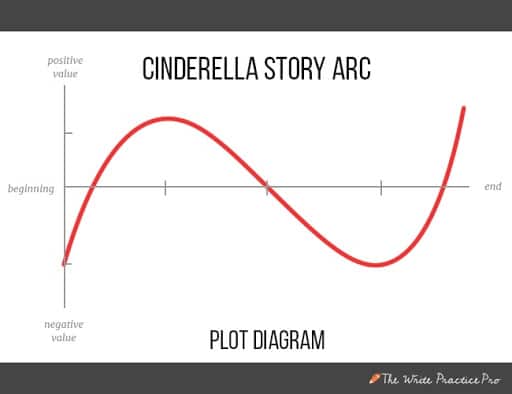
Cinderella Story Arc
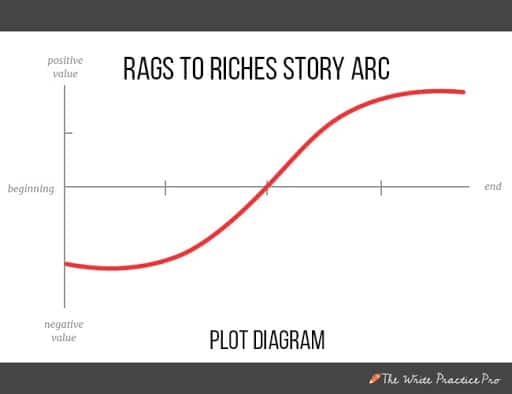
Hero's Journey
As we talked about above, hero's journey is a subtype of coming of age stories that follows a specific narrative pattern, first defined by Joseph Campbell and popularized by Christopher Vogler. It chronicles the protagonist's transformative quest, typically starting in the ordinary world and progressing through various stages.
Hero's journey stories generally begin with a character relatively immature and end with the character relatively mature. However, some hero's journey stories can be a testing plot, where the character starts “mature” as they know it, go through a period of trials where their maturity is challenged, and end having proved themselves (see man in a hole below).
They're typically paired with an external plot to drive the action of the story and present the character with obstacles to fuel their growth. Here's what an example might look like with a Cinderella story arc for the coming of age plot (and a double man in a hole shape for the external arc):
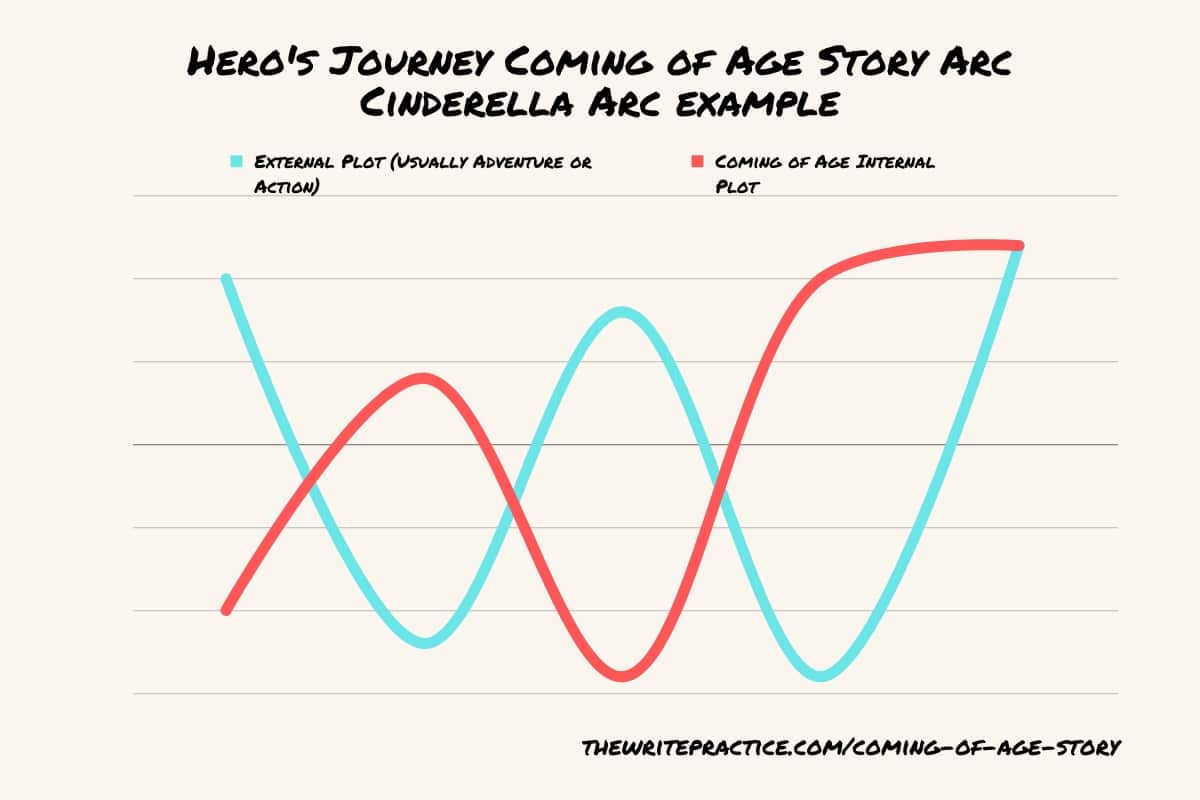
I Will Show You the World Plot
This is a very “worldview focused” structure that is less focused on the protagonist's personal growth and more focused on how they view the world and possibly their identity.
The character has one way of looking at the world, but the events of the inciting incident destroy that way of looking at the world. The rest of the story is about understanding what the world really looks like, and then the question of whether they can reconcile that new way of looking at the world with their old identity.
Most Common Story Arc:
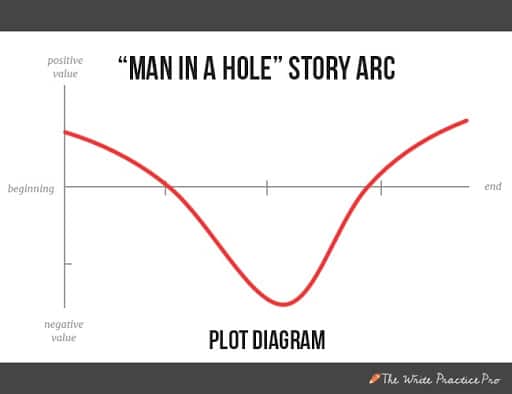
Man in a Hole
Examples:
How to Train Your Dragon (film)
Episodic
In this structure, the narrative is composed of distinct episodes or vignettes that capture different stages or significant moments in the protagonist's life. Each episode contributes to their overall growth and development, showcasing their evolving perspectives and experiences.
This is most common in TV serials or book series with a main plot that's not coming of age, extending the character's growth arc over the whole series.
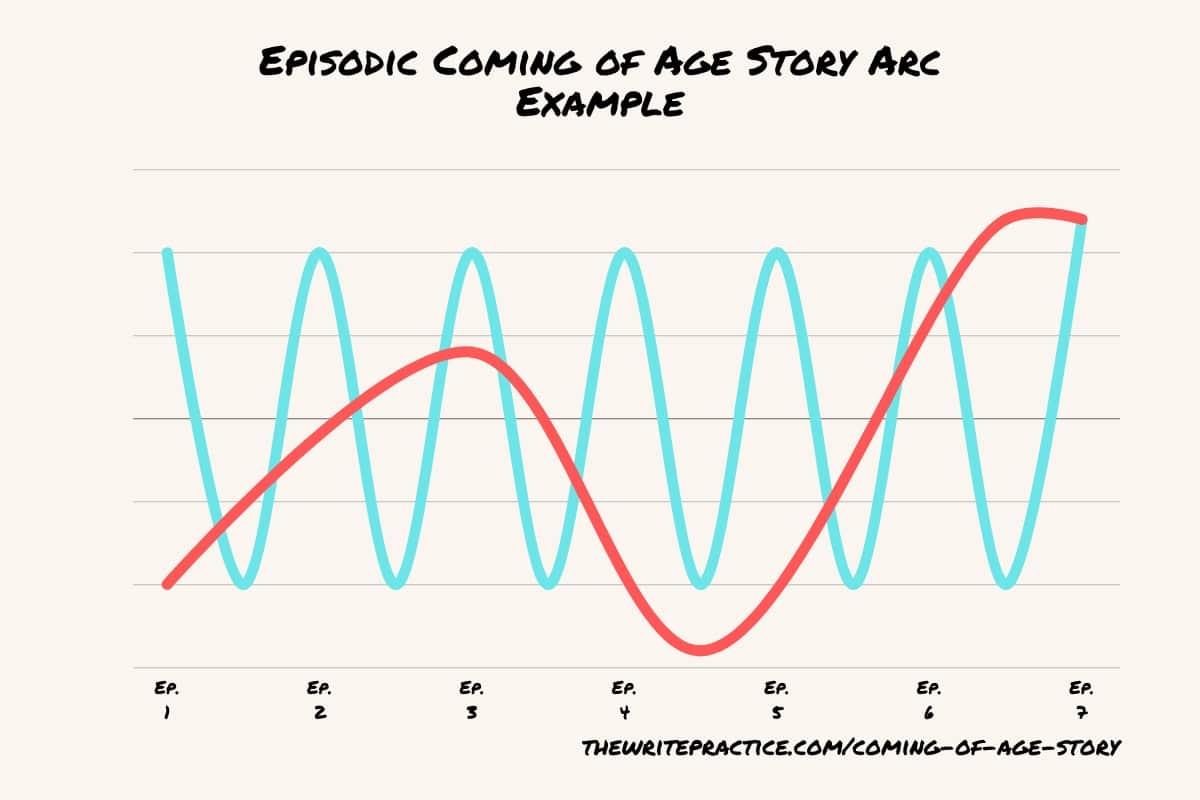
Sacrificial Hero (Combo Arc)
A particular type of coming of age plot in which the story ends tragically but the character grows throughout the story, climaxing with the character displaying their full transformation while at the same time bringing about their demise, usually in a sacrificial way.
Here's an example of what this character arc might look like.
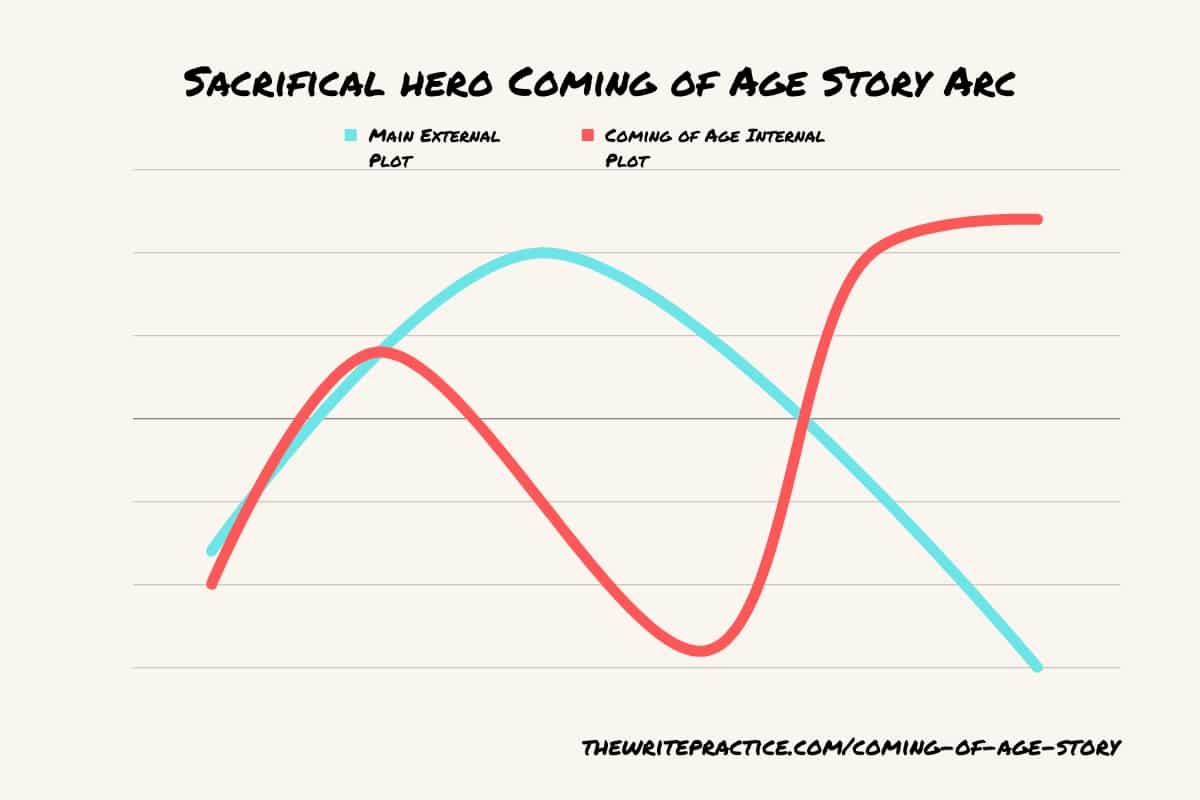
Examples of this combination character arc:
- Hamlet
- The Great Gatsby
- Man on Fire (film)
- Final Part of Beowulf
Ill Gotten Gains
The opposite to the Sacrificial Hero type, in this structure, the story ends happily for the character but it also shows how their character has transformed in a negative way through the story. The most common arc or shape of a story of this subtype is the Oedipus arc.
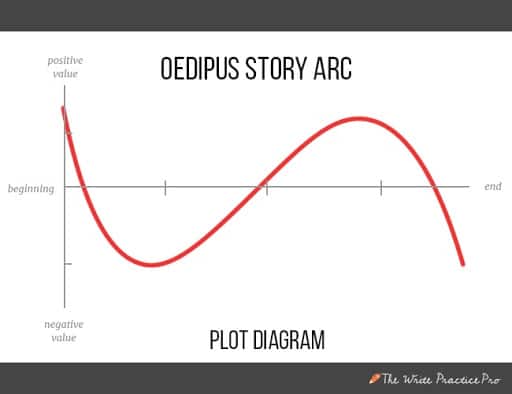
Examples of this subtype:
- Godfather Part II
Character Test Plot
This is the one type of coming of age story where the protagonist may not change much. They begin the story in a relatively mature place and end the story in the same place, their arc staying fairly steady throughout.
However, the obstacles of the story are all their to test their character, revealing who they really are in the midst of suffering, struggle, and challenge.
A good example is Old Man and the Sea, in which the protagonist Santiago doesn't really change or grow through the story. However, the journey he undergoes tests all of his internal resolve, to the extent that the coming of age plot is still present throughout the story.
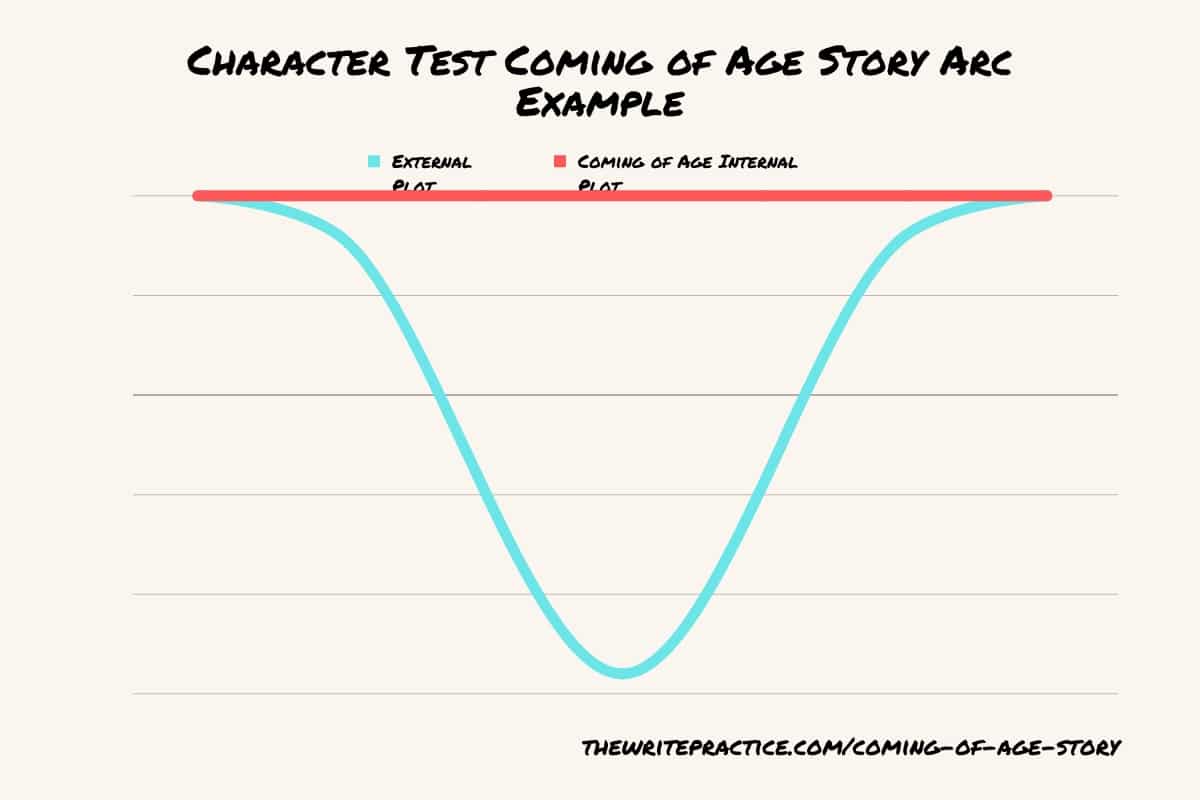
Failed Character Test
This is a type of tragic coming of age story in which the character squanders their potential and ends up a worse version of themselves than when they started. Here is an example of what this will look like paired with a Man in a Hole external plot:
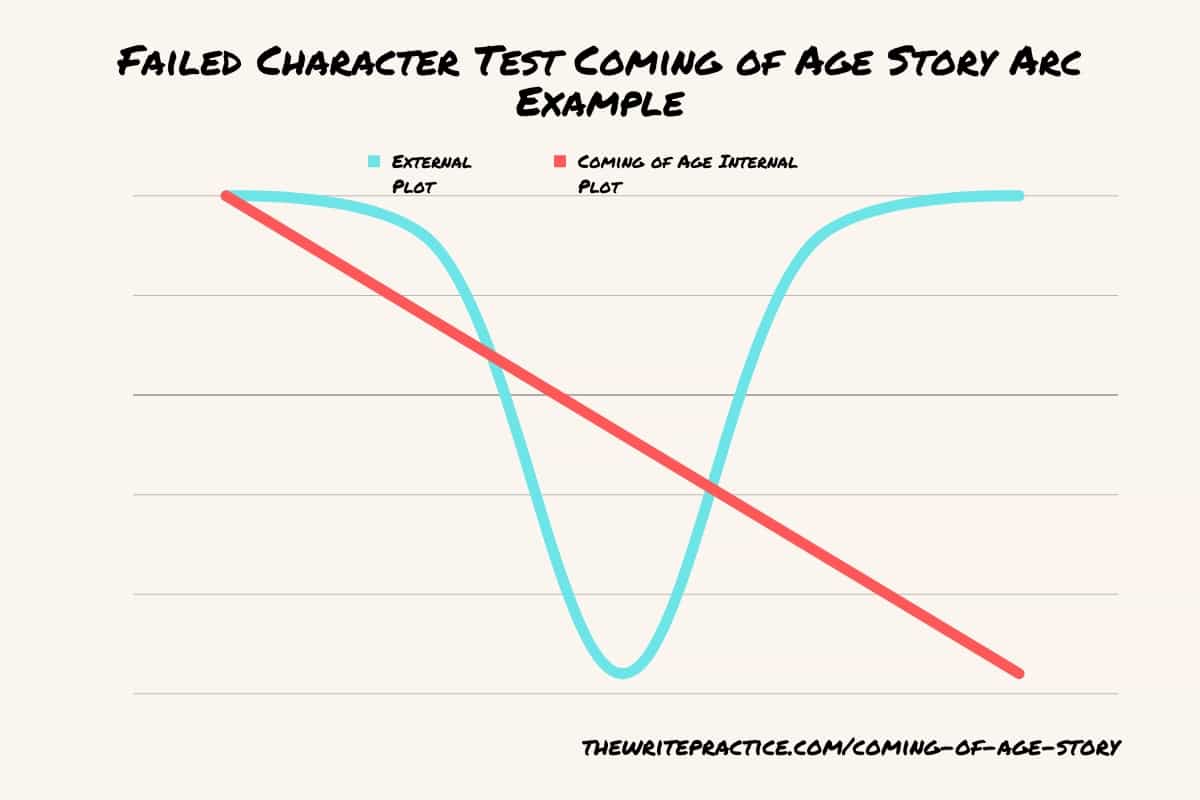
Examples:
The Picture of Dorian Gray by Oscar Wilde
Frankenstein by Mary Shelley
It's important to say that there is no “best” type of coming of age story. All are great and can work. The important thing is to pick the one that works best for the story you're trying to tell.
More Coming of Age Story Resources:
- Coming of Age Story Ideas
- 25 YA Writing Prompts
- How to Write a YA Story
- How to Write a Love Story: Complete Guide
Should You Write Coming of Age Stories?
If you want to write stories, you'll almost certainly need to write coming of age stories at some point.
There is not only a coming of age genre in and of itself, but it's also one of the most important types of stories, describing the personal growth of most of the characters in literature.
So go study how coming of age works in the stories you love, and then write one of your own.
Good luck, and as always, happy writing!
What's your favorite coming of age story? Let us know in the comments.
PRACTICE
Let's put what we've learned about coming of age to practice.
Start by writing down your own personal code, how you think people should live, your personal values, beliefs, and mindsets.
Then, set your timer for fifteen minutes and write about a character who lacks one of those parts of your code and how they face a challenge to grow in that area. When time is up, share your practice in the Pro Practice Workshop. Haven't joined us yet? Jump in!
Joe Bunting is an author and the leader of The Write Practice community. He is also the author of the new book Crowdsourcing Paris, a real life adventure story set in France. It was a #1 New Release on Amazon. Follow him on Instagram (@jhbunting).
Want best-seller coaching? Book Joe here.

I am writing a coming of age story right now, and this article has been invaluable! Thanks so much for the informative info!